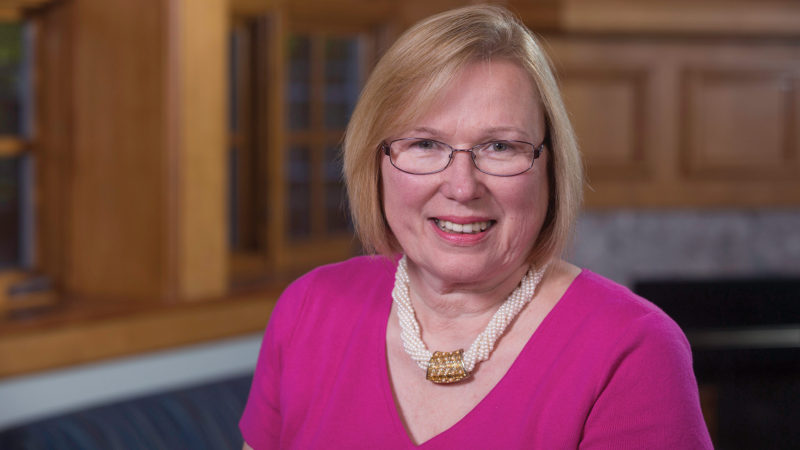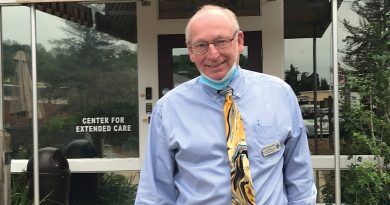Online Nursing Programs Evolve to Meet Workforce Needs
Education Anywhere
By JOSEPH BEDNAR
Back in 2010, the Institute of Medicine put out a call for 80% of all registered nurses to have a bachelor’s degree in nursing (BSN) by 2020. National nurse organizations picked up the goal as well — 85% is the current goal — while hospitals with ‘magnet’ status, such as Baystate Medical Center, maintain even stricter staffing goals.
One problem, though: RNs work full-time jobs, and many go home to a full slate of family and parenting obligations. And that leaves little opportunity to go back to school to take classes toward a BSN.
Enter the online model.
“The reason for the increase in online RN-to-BSN programs is the need to increase the number of BSN-prepared nurses in the workplace,” said Marjorie Bessette, academic director of Health and Nursing at Bay Path University.
“There’s a national initiative to have 85% of RNs be minimally at the BSN level by 2020, which is right around the corner,” she went on. “Nurses have full-time jobs and full-time lives. With area hospitals and work sites demanding BSNs, we’re trying to help that workforce shortage by creating accelerated programs online that nurses can take on their own schedule. They don’t have to be in class at a certain time.”
Bay Path, through its American Women’s College, launched its online RN-to-BSN program in 2015 and graduated its first class in 2017. It also offers online tracks toward master of science in nursing (MSN) and doctor of nursing practice degrees.

“Many students come in with an RN already, and they’re usually able to transfer most of their associate-degree credits toward a bachelor’s degree,” Bessette noted.
American International College (AIC) offers online programs for an RN-to-BSN degree, as well as its MSN track, which offers three concentrations: nurse educator, nurse administrator, and family nurse practitioner.
“Ultimately, both RNs and graduate-program students are already working nurses, and it can be challenging to go back to school while working on their chosen career, but the online format gives them the opportunity to do that,” said Ellen Furman, interim director for Graduate Nursing and assistant professor of Nursing at AIC.
“They have to be online weekly, but when, exactly, to be online is up to them,” she went on. “So, a nurse might be working nights, or might be on days, and this gives them the flexibility to arrange their schedule to get their work done at a time that’s convenient for them.”
And convenience is paramount for young medical professionals who don’t need much more added stress on their plates.
“Many have families, and trying to balance that can be really difficult,” Furman said. “With the online forum, they can work when they want to work, or when they have time to work, rather than being at a specific place at a specific time on a weekly basis.”
And that, industry leaders believe, will lead to many more nurses seeking the higher degrees so in demand.
“There is currently an RN shortage, which seems to be cyclical. Some years, graduates are looking for jobs, and some years, there are multiple jobs per graduate,” Furman said. “Right now, there seems to be a real shortage. If you look at any healthcare institution in the region, they’re all looking to recruit nurses, and at higher levels of education, especially if they’re a magnet institution like Baystate, which is looking to increase their number of nurses with higher degrees.”
Setting the Pace
Cindy Dakin, professor and director of Graduate Nursing Studies at Elms College School of Nursing, said Elms offers all three tracks of its MSN program — one in nursing education, one in nursing and health services management, and the third in school nursing — online.
“You don’t have to be sitting in front of the computer at a specific time. Classes are not live. You can access the materials through the system,” she noted. “The faculty will load the syllabus and load all the assignments for the entire semester, so students know when each deadline is. That allows them to plan ahead if they want to get ahead. If somebody moves quicker, or if a vacation is coming up, you can get it done ahead of time if you want to. It allows them flexibility when you can access the whole course and know what the requirements and deadlines are.”
Elms launched its first MSN program — a totally in-person classroom model — in 2008, then moved to a hybrid format, recogizing that nurses have busy lives, and the requirements of the job — with often-unexpected overtime shifts arising — made it difficult to come to class at times.
School nurses in particular were having a tough time making it to class for 3 or 3:30 p.m., Dakin noted. “They always had to be late, and we always made allowances for them, but they were still missing something in the first half-hour of class.”
The best option, department leaders decided, was a totally online program.
“It has helped to broaden our market,” she said. “Normally, students — even in hybrid programs — have lived within close proximity to Elms, and come on campus for classes. Being online, I have students from the North Shore, on Nantucket, and these people definitely would not have enrolled in our program if we still required face-to-face classes. Our base is much wider now.”
Bessette added that students face the same academic rigors as they would in a physical classroom, but they can complete the program on an accelerated basis to meet the requirements.
“It’s more convenient because, whatever shift you’re working as a nurse, you’re able to fit that in. When I went back for my bachelor’s degree, I did it the traditional way; we didn’t have an online program at the time. I went in the evening after work, one course, three nights a week, for 15 weeks. But I did my master’s online, and that made a huge difference.”
Most online nursing courses do require a clinical component, depending on the track. Also, “we have a few on-campus days, but those are minimal,” Furman said. “In the RN-to-BSN program, there’s no on-campus requirement.”
Breaking Through
Dakin was quick to note that, if students need to talk to faculty, the professor will schedule a session, or perhaps arrange to meet several students at once through a videoconferencing session.
In fact, technology has made the online model feel less isolating in recent years, she added. “When they load the course information, they may use PowerPoint, or they might tape themselves lecturing. Most of us, at the very least, do voiceovers, which lends a more personal aspect to it.
“Some students aren’t sure if they’ll like it,” she added. “They like the extra time, not having to travel to a specific place. But they’re also afraid of losing contact. But that doesn’t happen, and at the same time, it really broadens our base to recruit students.”
Furman agreed.
“There will be people who say, ‘I don’t think I can learn online.’ I’ve been that student who has been both online and in the classroom, and I’ll say that online education is not like it used to be,” she told HCN. “Today, with technology as it is, there are so many more options to deliver content and more effectively teach students in that online room. I believe if a student says they can’t learn online, they just haven’t been engaged in the right program in the right way.”


